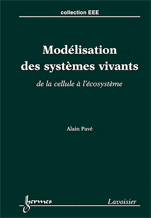La modélisation est devenue une méthodologie incontournable dans les sciences et les technologies du vivant. Cependant, quand doit-on avoir recours au modèle et comment l’appliquer ? Didactique, cet ouvrage propose de nombreux exemples partant de la question biologique, suivie de la construction du modèle, de sa mise en œuvre numérique et de l’interprétation des résultats. Les éléments fournis permettent de refaire la démarche et les calculs.
Les principaux outils sont présentés dans un langage accessible aux lecteurs ayant une culture mathématique de base. Les aspects conceptuels et théoriques sont également exposés avec précision. L’histoire de la méthode, les dimensions épistémologiques et éthiques ainsi que les développements futurs sont aussi introduits. Alliant pratique et théorie, mathématiques, biologie, écologie, histoire et perspectives, Modélisation des systèmes vivants permet d’acquérir à la fois une culture et une technicité dans ce domaine.
Sommaire de Modélisation des systèmes vivants
Avant-propos.
Chapitre 1. Une méthodologie de la modélisation en biologie et en écologie.
Chapitre 2. Schémas fonctionnels : construction et interprétation de modèles mathématiques.
Chapitre 3. Modèles de croissance – dynamique et génétique des populations.
Chapitre 4. Modèles d’interactions entre populations.
Chapitre 5. Modèles à compartiments.
Chapitre 6. Complexités, échelles, chaos, hasards et autres curiosités.
Concepts, résultats et outils.
Complément I. Équations différentielles.
Complément II. Équations récurrentes.
Complément III. Ajustement d’un modèle à des données expérimentales.
Complément IV. Introduction aux processus stochastiques. Bibliographie.
(source : Éditeur)

